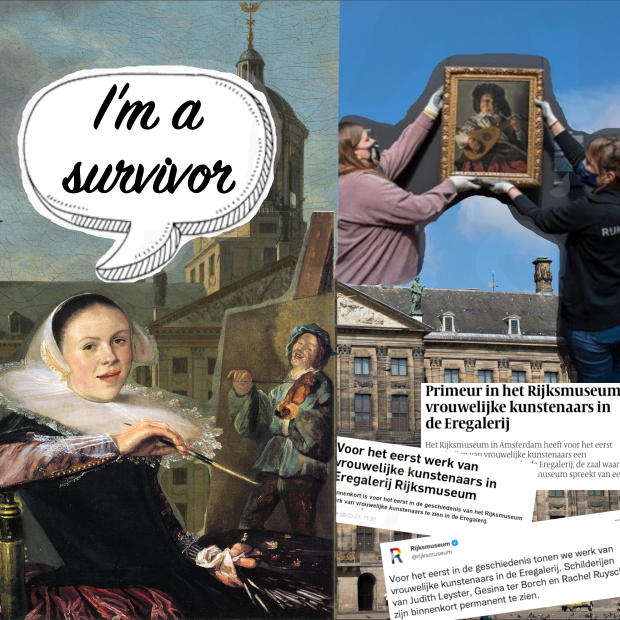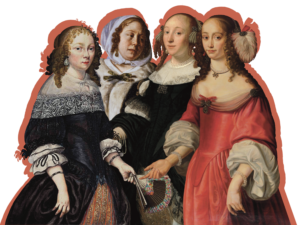Research
Dutch art was unique during the seventeenth century because paintings were bought by private citizens to decorate private homes, not just by the Church or State. Although these private households were run by women, art historians have never studied women as a group of potential consumers, the assumption being that only men are visible in the archives. A pilot project in preparation for this project and innovative research in disciplines other than art history have shown this assumption to be historically inaccurate. Taking an interdisciplinary approach, we study how women manifested themselves on the art market via multiple avenues:
Project 1 collects and analyses diverse archival documents bearing witness to women’s household possessions and purchasing power; Project 2 studies women’s tastes and preferences as consumers; and Project 3 studies the household as a space of consumption within which women found employment relating to the art market. Upon completion, the project will have contributed to key debates in art history, history, social and economic history and cultural history about women’s participation in the art market and society, and the behavioural patterns and decision-making processes that underlie household consumption.
Projects
PROJECT 01 / Women as Consumers I
The Households of the Super-Rich
How can we measure the impact of women as consumers in the seventeenth-century art market? Judith Noorman aims to answer this question, focusing on households of the super-rich. Despite representing only 1 percent of Dutch society, the super-rich were the dominant buyers in the art market in the seventeenth-century Dutch Republic. Nevertheless, existing scholarship has focused almost exclusively on individual cases, with a heavy emphasis on princesses living in courtly The Hague. Therefore, this project studies super-rich women as a group of consumers. Studying their probate inventories and various archival documents on household finances will let these women out of the archival shadows and enable us to understand their tastes, motivations, possessions and purchasing power.
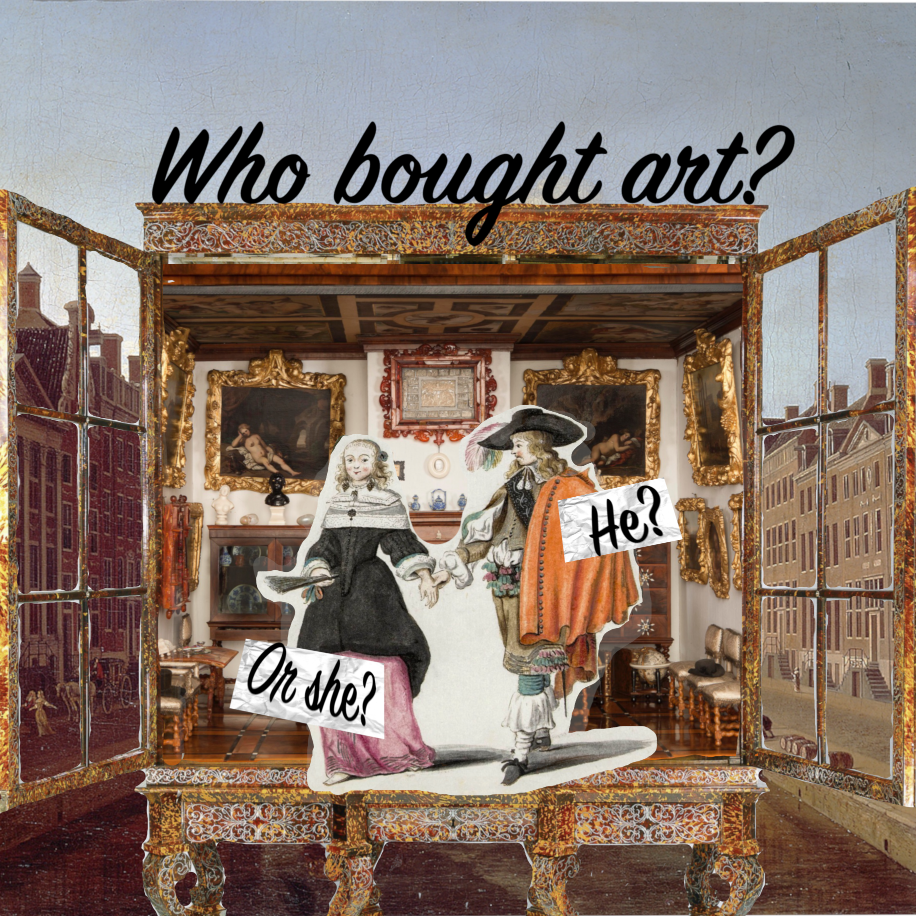
PROJECT 02 / Women as Consumers II
The Single Households of ‘Elderly Daughters’
Piet Bakker focuses on the role of unmarried women in the early modern art market. Inventories, wills and other archival sources relating to these so-called ‘elderly daughters’ are used to map out their purchasing behaviour. Did they buy paintings at all and, if so, how many and for what price? Is there a relationship between their buying behaviour and their religious beliefs, their social position and the size of their homes? Did they show a preference for certain genres? And if so, may we then conclude that the composition of their painting collections is representative of ‘female taste’ in the seventeenth century?
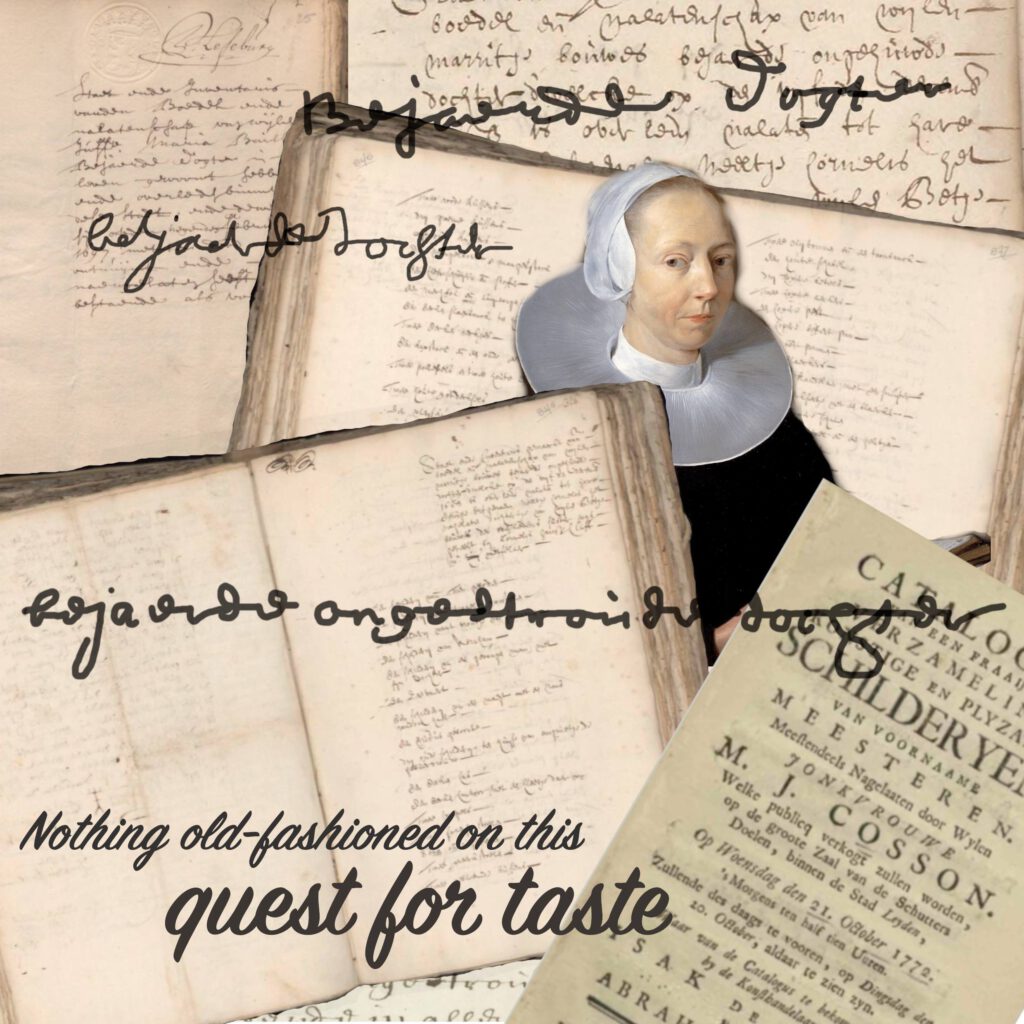
PROJECT 03 / Women as Professionals
Working from Home
Women as Professionals in the Household and the Art Market of the Dutch Republic, 1580-1720.
Since the 1980s, art historians have increasingly studied women artists. To date, however, there has been no study of other, let alone all, professional groups of women active in the art market, leaving the image of the seventeenth-century Dutch art market as a man’s world intact. To challenge this persistent assumption, Marleen Puyenbroek will provide an overview of women’s professional participation in the art market. Outside the current methodological frameworks, this project will study working women within the broader social and organisational structures, particularly the main domain in which women reigned: the household.
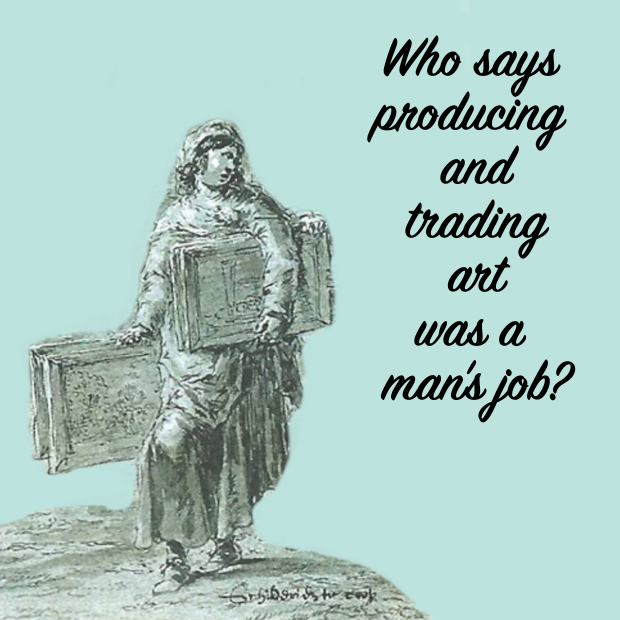
PROJECT 04 / Women Artists
Survival of the Feminine
Fluctuations in the value, reputation and collecting practices of art made by women in the Netherlands, 1600-1900.
Although historically legally excluded from public and professional life, women have always found ways to impact their spheres, both in private and public. Women made art as much because of the different conditions they faced, as despite the limitations imposed upon them. This project systematically applies this idea to art in the Netherlands, 1600-1900. Rather than focusing on the limitations, Anna Lawrence studies how women navigated and leveraged such differences to produce and preserve their art. Understanding the systems artist women were operating in, how these could be negotiated and how they changed over time will provide a more balanced understanding of the factors that shaped art production and collection in the Netherlands as a whole.
